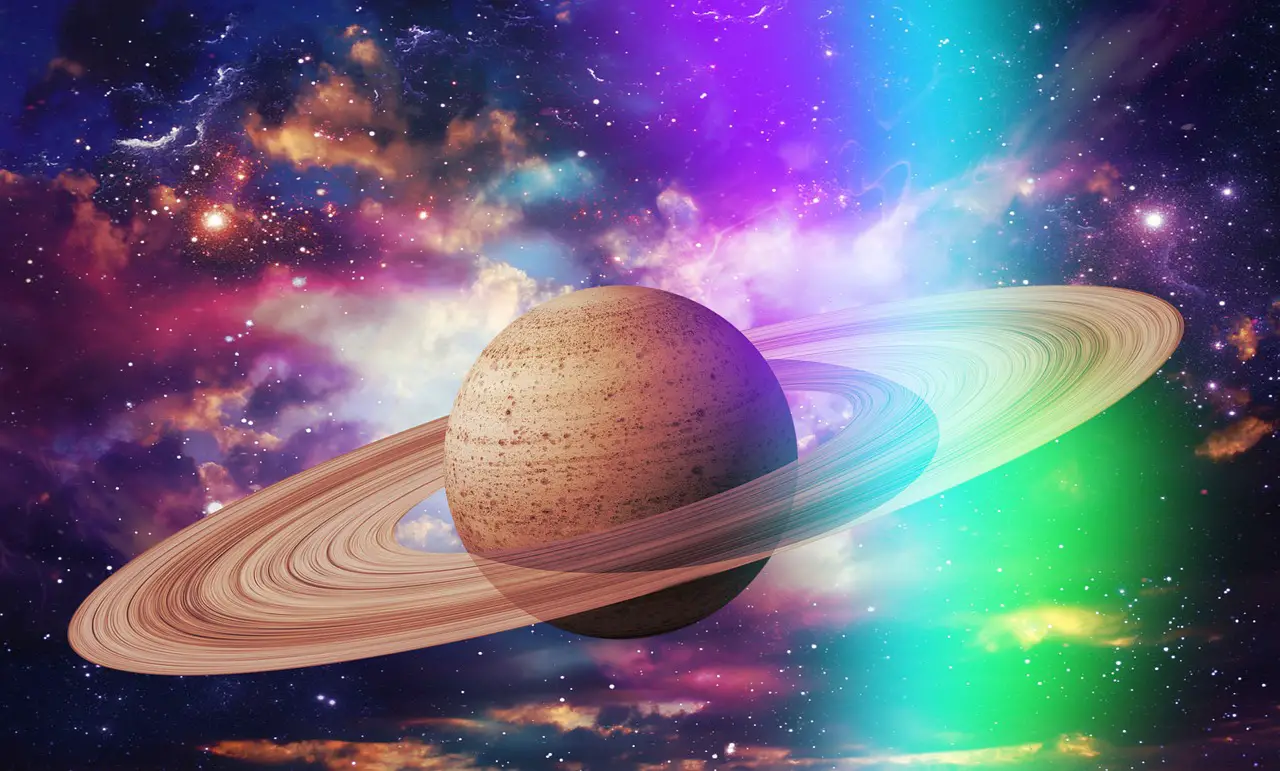Saturn, the sixth planet from the Sun and the second largest in our solar system, has enthralled scientists and space fans for ages. Saturn is the second largest planet in our solar system. Saturn is famous for its breathtaking ring system, which can be seen from Earth. However, the planet still conceals many mysteries that have yet to be solved. Even though its singular look has been seen and researched to a great extent, the mystery of what lurks beneath its thick clouds and roiling storms continues to be a subject of significant fascination. So, exactly what is it that is found within Saturn?
A combination of observations, theoretical models, and data obtained by space probes like NASA’s Cassini mission, which examined the planet from 2004 to 2017, are what scientists rely on in order to comprehend the composition and structure of Saturn. Cassini’s mission lasted from 2004 until 2017. Researchers have stitched together a picture of the inside of Saturn, revealing a fascinating realm that is unlike any other in our solar system. This was made possible by the work of the researchers.
There is an extremely thick and solid core at the center of Saturn that is primarily made up of rock and metal. It is believed that this core is encased in a thick layer of metallic hydrogen, which is a type of hydrogen that may take on the properties of a metal when subjected to extremely high pressures. This layer, which extends outward from the core, is where the real magic of Saturn starts to take effect.
A second layer, predominantly made up of molecular hydrogen, can be found directly on top of the metallic hydrogen layer. As we continue to journey further out into space, the condition of the hydrogen eventually changes from that of a molecular gas into a peculiar state that is referred to as a “supercritical fluid.” In this configuration, the hydrogen does not exist as a gas or a liquid but rather as a combination of the two; as a result, it possesses properties that are distinct from those possessed by regular matter.
At higher altitudes, the atmosphere of Saturn predominates over the view of the planet. The atmosphere surrounds the planet and spreads outward for thousands of kilometers. It is primarily made up of hydrogen and helium, and it also contains trace amounts of other substances such as methane and ammonia. This gaseous envelope conceals the underlying structure of the planet from direct view. It is also the source of the distinctive cloud bands and storms that can be seen on Saturn’s surface.
Saturn possesses a stunning ring system that is made up of an infinite number of particles that range in size from micrometers to meters. This is one of the planet’s most alluring characteristics. These rings, which are largely composed of ice particles with minor amounts of rocky material, encircle the planet and are maintained in place by a delicate balance between the planet’s gravity and the centrifugal force that is generated by the rings. The question of where Saturn’s rings came from is still open for debate among scientists, however some hypothesize that they are fragments of moons that have been destroyed or debris from moon-on-moon collisions.
Saturn’s outer layers have a magnificent beauty and a fascinating mystery to them, but the true composition of the planet’s core and the precise activities that are taking place within its depths are not completely understood. The exact composition, temperature, and behavior of Saturn’s interior are the subjects of ongoing research by scientists, who are also continuing their investigation of the planet’s internal dynamics.
Researchers have found that studying the interior of Saturn can help them gain a better understanding of the origin and evolution of gas giants, which can provide insights into planetary systems both within and beyond our solar system. It provides a glimpse into the conditions required for the formation of the ring systems observed in a variety of celestial bodies, so assisting our comprehension of the wide variety of planets and the distinctive characteristics of each one.
Future space missions and probes may provide us the opportunity to explore deeper into the mysteries surrounding Saturn as our knowledge and technological capabilities continue to grow. It is possible that further findings will shed light on its magnetic field, the precise composition of its core, and even the possibility that it has hidden moons or oceans beneath its surface.
Saturn is a celestial marvel that continues to enchant scientists as well as the general public. The planet is known for its mesmerizing rings as well as its intriguing interior. When we take in its splendor from a distance, we can’t help but wonder what mysteries lie concealed beyond the clouds that surround it. We are getting closer to deciphering the mysterious world that lies within Saturn with each new research and discovery, which is growing our knowledge of the amazing heavenly bodies that inhabit our universe.
![]()
